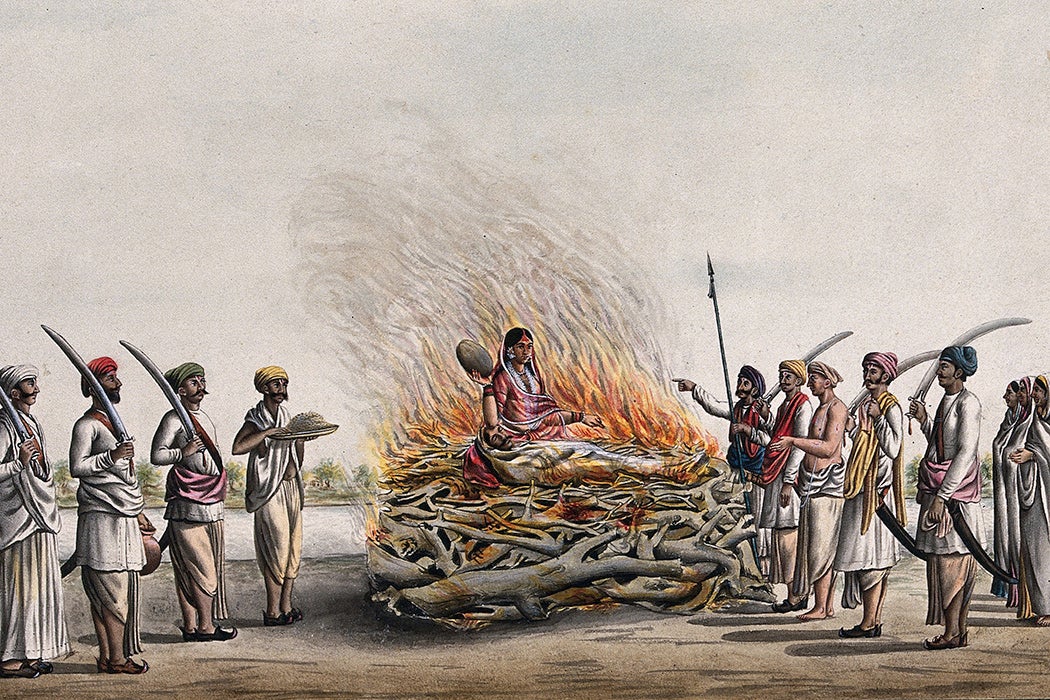It was in 1779 that the ruins of the South Indian empire Vijayanagar (c. 1336–1646), were discovered by Col. Mackenzie, the first Surveyor General of India. Since then, and especially after the publication of Robert Sewell’s book on Vijayanagar in 1900, this vast and wealthy dynasty has been the subject of much academic and historical speculation.
Most information about Vijayanagar comes from accounts of contemporaneous foreign visitors, ranging from the Italian Niccolò dei Conti in the early fifteenth century to the Portuguese explorers Fernão Nunes and Domingo Paes in the early sixteenth century, as well as subsequent research of Western and Indian scholars and historians. Aniruddha Ray, in his 2003 paper, titled “The Rise and Fall of Vijayanagar — An Alternative Hypothesis to ‘Hindu Nationalism’ Thesis” and published in the Proceedings of the Indian History Congress, highlights its most widely accepted origin story. The empire is believed to have been established in 1336 by two brothers, Harihar and Bukka (or Hukka and Bukka as per some accounts), at the behest of a Hindu saint. There is, however, plenty of scholarly debate surrounding the veracity of this claim.
Most recently, the origins of the Vijayanagar empire were the subject of acclaimed author Salman Rushdie’s 2023 novel, Victory City, which reimagined it from a feminist perspective. According to his story, the empire was breathed to life by a woman married to both the aforementioned brothers. Though this is certainly an interesting interpretation, records show that it’s unlikely for women to have had much agency in Vijayanagar.
The role of women in Vijayanagar—across much of India—was made most evident from the widespread prevalence of the practice of widow-burning, or sati. In 1964, author Sushil Chaudhury published his assessment of sati in India’s medieval era (c. 600–1300) in the Proceedings of the Indian History Congress. He credits international travelers who “poured into India in great number during that period” for the “detailed knowledge” we currently have of this social practice where a widow would immolate herself on the burning pyre of her dead husband.
Chaudhury points out that “although the practice of ‘Sati’ was prevalent in almost all parts of medieval India, the main homes of it were, however, the Ganges Valley, the Punjab and Rajasthan in the north, and Madurai and Vijayanagar in the south.” In the South, some women were even buried alive with their husbands, he writes.
The extra-ordinary confidence and cheerfulness of the widows in facing the horrible tragedy made some foreign travellers suspicious and incline [sic] to believe that the former had dulled their senses with a dose of opium or other narcotics. After a careful reading of these accounts, it can be asserted with little doubt that the widows were in some cases, even drugged and narcotized so that they became “Satis” while unaware of what they were doing.
The practice was most popular amongst the upper castes, especially the ruling classes. Chaudhury relates an incident described by Portuguese missionaries in which 11,000 women sacrificed their lives when their husband, who the ruling king, died.
“[This] seems to be an utter exaggeration, [but] it was customary in Vijayanagar to burn two or three thousand wives in the flames of a Raja’s pyre,” he adds.
While examining the reasons for this unfortunate practice, Chaudhury shares that most women perhaps did it to escape the misery of a widow’s life, as widow remarriage was prohibited. There was also the allure of sticking to one’s religious traditions and values, which were deep-rooted.
“No woman of honour would ‘refuse compliance with the established custom’,” he writes. Added to this was a worry about loss of face and family prestige if a widow remained alive.
A 1996 paper titled “Urban Culture of Medieval Deccan (1300 AD to 1650 AD)” published in the Bulletin of the Deccan College Post-Graduate and Research Institute by M. S. Mate, establishes that all social and cultural activities in urban areas of South India during this time were centered around kings. In this scenario, women became important political pawns.
Mate writes that “a number of instances are mentioned wherein the daughter of a Hindu nobleman, officer or king (in one case that of Vijayanagar) was demanded in marriage as part of a treaty and the demand was fulfilled.”
Weekly Newsletter
Although the status of married women in the Vijayanagar empire is shown as being unfavorable, temple dancers fared better. Ray relies on the testimony of foreigners such as the Ambassador of Persia, Abdur Razzak, and the aforementioned Niccolai dei Conti, Domingo Paes, and Fernão Nunes, among others.
Their records speak of a road in Hampi, the capital of Vijayanagar, called the Road of the Dancing Girls. Ray writes that
every dancing girl had a room. The Portuguese traveller Pae[s] had not termed these dancing girls as ordinary prostitutes. He stated that in every festival these dancing girls used to go dancing to the temple with other ladies. Even during the festival of Navaratri, he had seen these dancing girls moving towards the temple in two files dancing all the way with gold and diamond jewelleries.
Paes also described the women as being very wealthy in terms of jewelry, cash, and land. They had a retinue of servants waiting on them. As Ray clarifies,
Needless to say that they were temples [sic] girls and the European travellers were not familiar to this institution. […] Here one could see the coexistence of the Brahmins, horses and the temple girls even the prostitutes, in the festivals.
With these varying accounts, the status of women in the Vijayanagar empire is still open for debate. While married women. especially royal wives, may have been held in high esteem, their futures depended on their husbands’ longevity. Temple dancers, on the other hand, enjoyed both spiritual and material riches, and—if historical accounts are to be believed—an elevated social status.
Support JSTOR Daily! Join our membership program on Patreon today.







